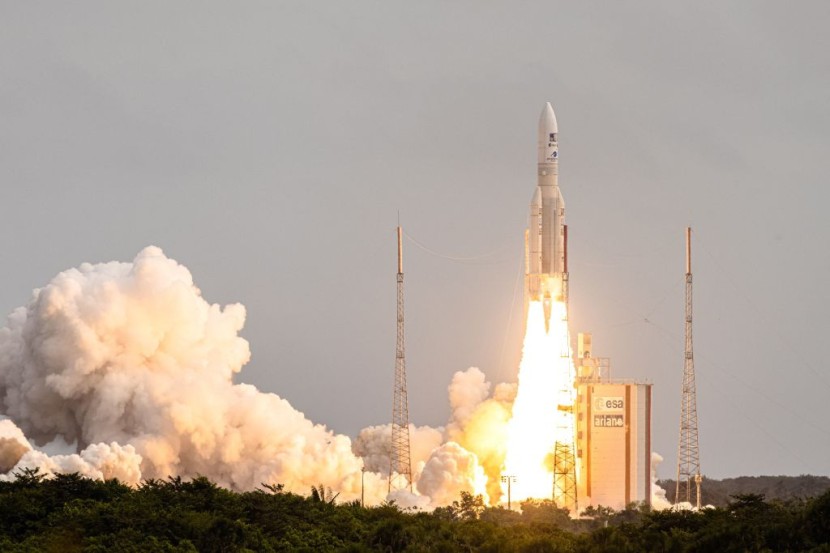
The European Space Agency's (ESA) JUICE probe, which is embarking on a historic trip to Jupiter's moons, has lifted off from its launchpad in Kourou, French Guiana, at the northeastern corner of South America.
On Friday, April 14, at 8:14 AM ET, an Ariane 5 rocket lifted off from Europe's spaceport in Kourou, French Guiana, carrying the Jupiter Icy Moons Explorer (JUICE) mission.
According to CNN, ESA received a signal from JUICE almost an hour after liftoff, proving that ground-based mission control is able to "talk" to the vehicle after the spacecraft detached from the Ariane 5 rocket 28 minutes after launch.
"We have #AcquisitionOfSignal from #ESAJuice! The spacecraft has said its first words from its new home in space, captured by our New Norcia ground station in Western Australia. @ESA_Juice, we hear you loud and clear," stated in a Twitter post by ESA operations.
We have #AcquisitionOfSignal from #ESAJuice!
— ESA Operations (@esaoperations) April 14, 2023
The spacecraft has said its first words from its new home in space, captured by our New Norcia ground station in Western Australia.
@ESA_Juice, we hear you loud and clear.
#AoS https://t.co/wYDS3AAgrb pic.twitter.com/n1cr8JNWvb
Jupiter Exploration
In 17 days, JUICE will release its solar panels, antennas, and other sensors into space and then spend the next three months testing and configuring them.
Jupiter is the biggest planet in our solar system, and it will take JUICE eight years to get there. The spaceship will use gravitational slingshots when passing past Earth, the moon, and Venus throughout the course of its long mission.
When JUICE finally reaches Jupiter in July 2031, it will spend the next 3.5 years in orbit, making close flybys of Ganymede, Callisto, and Europa along the way. JUICE will make history as the first spacecraft to circle an extrasolar moon when it zeroes in on Ganymede at the conclusion of its mission.
The icy moons Europa, Ganymede, and Callisto might all have seas under their frozen surfaces, making them good candidates for sustaining life.
Meanwhile, NASA's Europa Clipper mission will launch in 2024, arrive at Jupiter in April 2030, and perform roughly 50 flybys of Europa, getting as close to the moon's surface as 16 miles (25 kilometers) in altitude.
The two missions, taken together, may provide answers to some of the most perplexing questions regarding Jupiter and its moons.
Harsh Environment to Live and Work
JUICE's primary body measures 13.4 feet by 9.4 feet by 14.3 feet, making it difficult for it to survive and be productive in the Jupiter system, as Space.com reported.
Jupiter circles the sun five times further than Earth. JUICE's solar panels must be big and effective since sunlight far out there is diffuse. The cross-shaped arrays will span 915 square feet and convert 30% of solar radiation into electricity. Mission team members said Jupiter's arrays will not even power a hair dryer.
Jupiter's magnetic field complicates spacecraft and mission planning. This field immediately affects delicate scientific apparatus. Worse, it traps charged particles, producing a super-intense radiation environment surrounding the enormous planet.
Electronics are damaged by radiation, and as a workaround, the JUICE team encased the probe's most delicate equipment in a lead-lined vault.
© 2025 HNGN, All rights reserved. Do not reproduce without permission.








